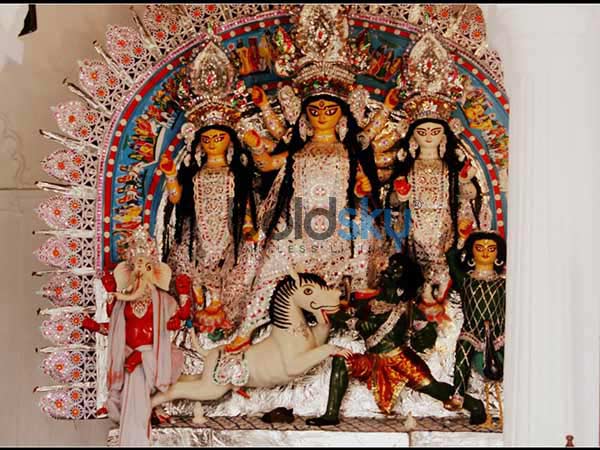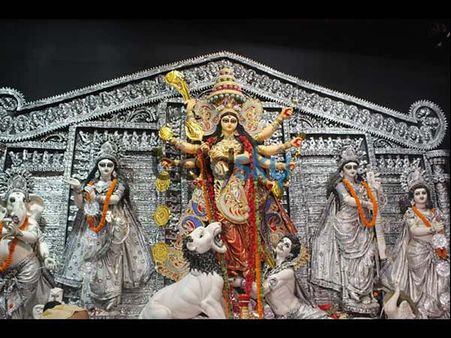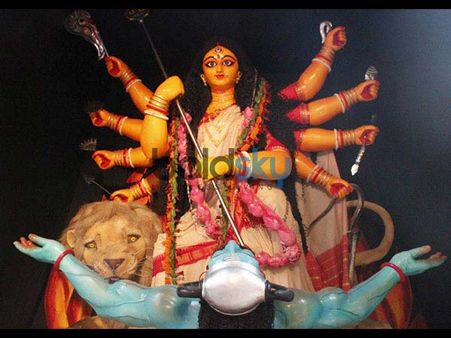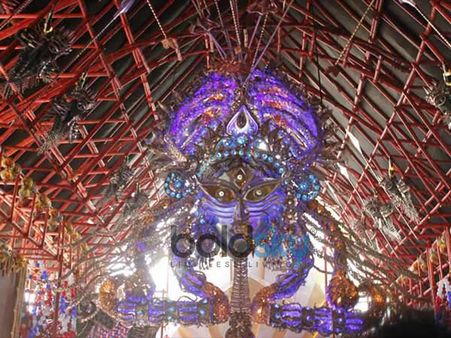Just In
- 2 hrs ago

- 5 hrs ago

- 5 hrs ago

- 9 hrs ago

Don't Miss
- Finance
 Adani Injects Rs 8,339 Crore, Boosts Ambuja Cements Stake to 70.3%
Adani Injects Rs 8,339 Crore, Boosts Ambuja Cements Stake to 70.3% - Movies
 Anupamaa Twist | Will Anuj DIE? Will Gaurav Khanna Exit? Rupali Ganguly’s Co-Star REACTS: I’m Sure…
Anupamaa Twist | Will Anuj DIE? Will Gaurav Khanna Exit? Rupali Ganguly’s Co-Star REACTS: I’m Sure… - Sports
 Glenn Maxwell takes mental health break: Kohli to Stokes - 5 star cricketers who prioritised themselves before cricket
Glenn Maxwell takes mental health break: Kohli to Stokes - 5 star cricketers who prioritised themselves before cricket - News
 Royal Challengers Bengaluru RCB's 47 Crore Worth Players Resting On Bench
Royal Challengers Bengaluru RCB's 47 Crore Worth Players Resting On Bench - Automobiles
 Mahindra 3XO SUV Latest Teaser Reveals Connected Car Tech: All Details Here
Mahindra 3XO SUV Latest Teaser Reveals Connected Car Tech: All Details Here - Technology
 OnePlus 13 Early Leak Hints at a Revamped Camera Island, and Fast Charging to Remain at 100W
OnePlus 13 Early Leak Hints at a Revamped Camera Island, and Fast Charging to Remain at 100W - Education
 Schools in Odisha to remain closed from April 18 to 20 due to heatwave
Schools in Odisha to remain closed from April 18 to 20 due to heatwave - Travel
 From Coconut Breaking on Head to Men Dressing as Women: 12 Unique Indian Rituals Explored
From Coconut Breaking on Head to Men Dressing as Women: 12 Unique Indian Rituals Explored
Significance Of The Arrival & Departure Of Maa Durga In Different Carriers Each Year
Check out the significance of the arrival and departure of maa durga in different carriers each year.
The festival of Navratri is the celebration of the arrival of Goddess Durga. The whole of India and specifically the eastern states of India are decked up in finery and decorations to welcome the Mother Goddess.

The arrival of Mother Goddess is considered very auspicious and the vehicle that she uses to come in is just as important. Every year, Goddess Durga arrives in a specific vahan and chooses another vahan for her departure. Her choice is seen to predict how the following year will fare for the world and its inhabitants. If Goddess Durga chooses the same vahan for both her arrival and departure, it is considered to be a bad omen. For example, in the year 2016, Mother Durga chose a horse as her vahan for both her arrival and departure.

The vahans of Goddess Durga this year:
In the year 2017, Goddess Durga arrives on an elephant and departs on a horse. The elephant is considered to be a good omen and it predicts a good harvest. The horse on the other hand, is not a very good omen and it predicts droughts in the coming year.

How Is The Choice Of Vahans Decided?
So, how do we know what vahan the Goddess is going to choose? Each day of the week has been assigned with a vahan. The lion is the most famous among Goddess Durga's vahans and it not a very well-known fact that she has four other vahans. They are a horse, an elephant, a palanquin and a boat. Depending on the day of the week that she arrives, we know which vahan of her choice will be.
For example, this year, Mother Durga arrives (the start of Navratri) on a Sunday or a Monday (depending on your location). The animal specified for those days is an elephant. Navratri ends on a Tuesday; therefore, Goddess Durga shall depart on a horse which is the vahan of that day.
Now, let's take a look at the predictions that come with each vahan.

Elephant
An elephant, as mentioned above, is a good omen. When the Goddess arrives or departs on an elephant, the year will be one of happiness and full of joy. The harvest will be good and plentiful. Hard work shall reap very good results. Luck will be favourable to those that like to test it. Goddess Durga shall fill your life with blessings and good tidings.

Boat
The boat is a good omen too, but the results may not be had for a long time. The boat is a means of water transport. So, the arrival or departure of Mother Durga in a boat foretells good harvest and floods. While floods may seem to be a bad omen at first glance, floods also bring fertile soil to the land which ensures a prosperous harvest.

Palanquin
A palanquin is a bad omen. The arrival or departure of the Goddess in a palanquin foretells the outbreak of an epidemic. It tells us that hard times lie ahead and the humans need to stand united at this hour of need.

Horse
The horse is seen as a means of destruction as it is the main animal used in wars or battles. Choosing a horse as the vahan for arrival or departure spells doom for the world. The devotees of Mother Durga pray to her to make the destruction and impeding doom bearable during Navratri.
-
 festivalsDurga Puja 2022: Goddess Durga's Favourite Flowers, Sweets, Fruits And Colours
festivalsDurga Puja 2022: Goddess Durga's Favourite Flowers, Sweets, Fruits And Colours -
 festivalsDussehra 2020: Muhurta, Legends And Significance Of This Festival
festivalsDussehra 2020: Muhurta, Legends And Significance Of This Festival -
 bollywood wardrobeNavratri 2020: Sayani Gupta’s Beautiful Blue Saree Will Guarantee Give You Festive Feel
bollywood wardrobeNavratri 2020: Sayani Gupta’s Beautiful Blue Saree Will Guarantee Give You Festive Feel -
 festivalsNavratri 2021 Day 9: Know About Devi Siddhidatri And Maha Navami
festivalsNavratri 2021 Day 9: Know About Devi Siddhidatri And Maha Navami -
 festivalsNavratri 2020: Know What Is Sandhi Puja And Its Significance
festivalsNavratri 2020: Know What Is Sandhi Puja And Its Significance -
 festivalsNavratri 2021 Day 8: Know About Mahagauri, Puja Vidhi, Significance And Mantras
festivalsNavratri 2021 Day 8: Know About Mahagauri, Puja Vidhi, Significance And Mantras -
 festivalsNavratri 2021 Day 7: Mata Kalaratri Legend, Puja Vidhi, Significance And Mantra
festivalsNavratri 2021 Day 7: Mata Kalaratri Legend, Puja Vidhi, Significance And Mantra -
 festivalsNavratri 2021 Day 6: Know About Goddess Katyayani, Puja Vidhi And Her Significance
festivalsNavratri 2021 Day 6: Know About Goddess Katyayani, Puja Vidhi And Her Significance -
 bollywood wardrobeNavratri 2020: Vidya Balan, Hina Khan And Urvashi Dholakia’s Red Outfits To Brighten Up The Day
bollywood wardrobeNavratri 2020: Vidya Balan, Hina Khan And Urvashi Dholakia’s Red Outfits To Brighten Up The Day -
 festivalsNavratri 2022 Day 5: Know About Mata Skandamata, Puja Vidhi And Her Significance
festivalsNavratri 2022 Day 5: Know About Mata Skandamata, Puja Vidhi And Her Significance -
 festivalsNavratri 2022 Day 4: Know About Mata Kushmanda, Puja Vidhi, Significance And Mantras
festivalsNavratri 2022 Day 4: Know About Mata Kushmanda, Puja Vidhi, Significance And Mantras -
 bollywood wardrobeNavratri 2020: Kajol’s Pretty Eye-Catching Yellow Kurti-Pant Will Make You Stand Out From The Crowd
bollywood wardrobeNavratri 2020: Kajol’s Pretty Eye-Catching Yellow Kurti-Pant Will Make You Stand Out From The Crowd


 Click it and Unblock the Notifications
Click it and Unblock the Notifications



